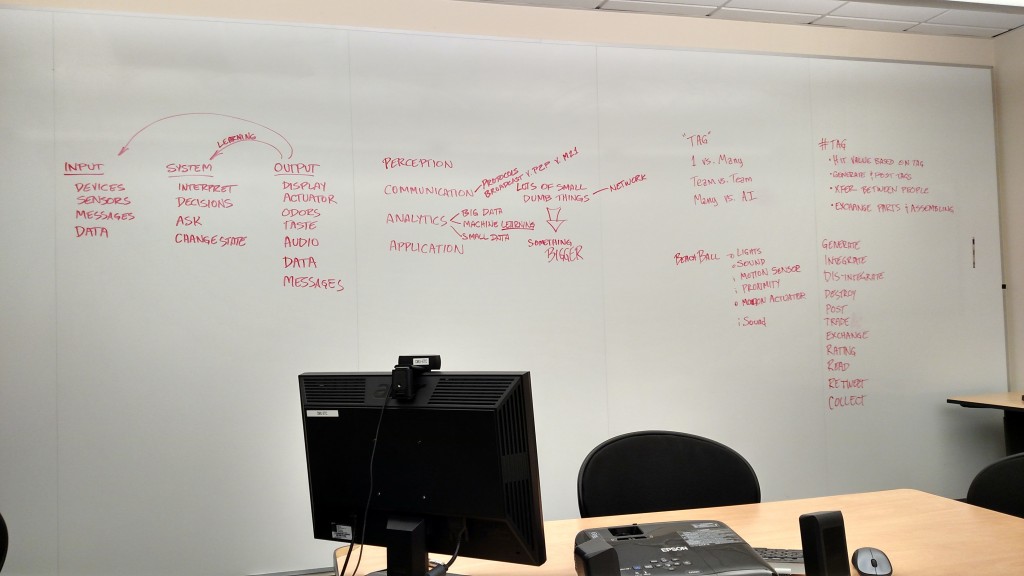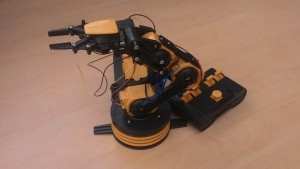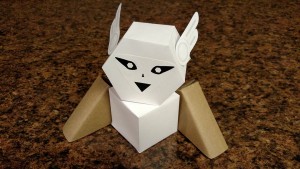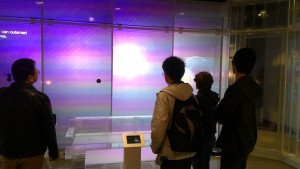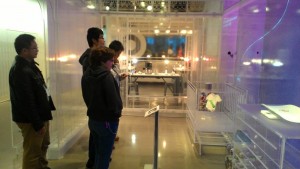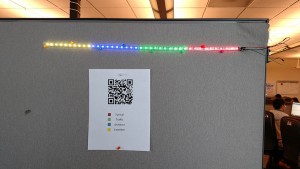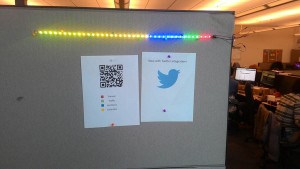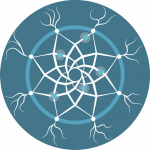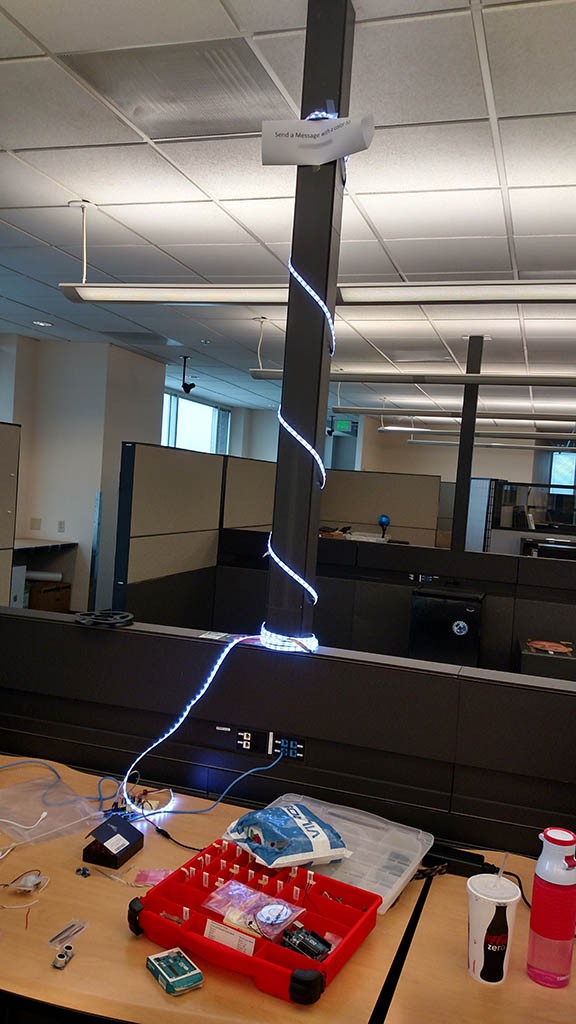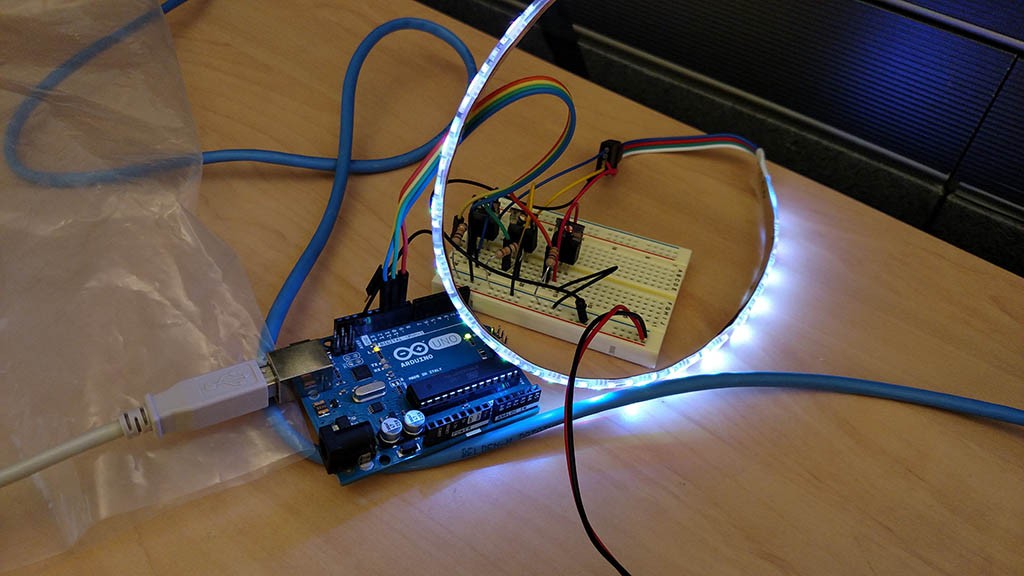We’ve reached the point in the semester where it’s time to really focus in on one idea. We could continue exploring and prototyping if that was our goal for the project. However, we have decided we would much rather put together one idea with more polish than explore a myriad of ideas at the proof-of-concept level.
Our week started with additional brainstorming, trying to figure out why our ideas did not feel like they truly fit the greater concept of the Internet of Things. This led to a powerful realization of what the IoT really is.
When people talk about the IoT and all of the potential it holds, people rarely focus on any specific products. Instead, they talk about higher level scenarios.
For instance, your car breaks down. With the IoT, your car could identify which part is broken, inform the local repair shop, have an appointment scheduled, and order the necessary part from the manufacturer. Then, when you bring your car in, the mechanics are already ready for you and have all of the parts they need to complete the repair.
In this scenario, the seemingly magical result is that your car takes care of arranging its own repairs when it breaks, with minimal action from you (other than perhaps getting the car to the shop). However, if you were to examine the individual components that make this chain of events possible, none of the products themselves are particularly interesting. A sensor checks the status of the parts, some communication protocol sends messages with the part ID, a computer scheduling system assigns an appointment…. The links in this chain are all relatively simple. It is what they achieve together, the greater whole that we see on the surface, that make the Internet of Things so compelling.
This also reinforces what we experienced when we visited Target Open House during week 3. We found we were not particularly impressed by any of the individual products on display. They were all relatively “dumb” input and output devices. We were far more interested in the scenarios that the displays were able to illustrate for us.
Up until now, we have been focusing on the hardware and APIs we might use. We have now realized that to make a truly interesting IoT product, we have to consider the greater concept and interaction more than the technology that makes it possible. We were also focusing on creating a relatively singular product, which goes against the defining characteristic of IoT: many small things connecting to create something greater than the sum of the parts. For our product to have the right effect, there needs to be a greater overarching connected system. To fit within the scope of our project, perhaps what we are building is more of an Intranet of Things.
With this new perspective in mind, the team sat down with Carl for an all new brainstorming session. We focused on two different elements we found were successful so far: physicality, and games. Creating something physical that we can touch and interact with is far more compelling, especially when it is something that really can’t be recreated the same way as a digital application. It should be physical with a purpose. Something game-like is also a good direction for us. People find more intrinsic value in a game they can enjoy themselves than in something with hypothetical potential for some practical use they may not be able to experience. Plus, our team finds it a much more entertaining and exciting area to explore.
We ended up exploring two different concepts. The first was some derivation of a game of tag using smart, connected components. The second was a set of connected beach balls that people could interact, where each ball would react to certain actions as well as to other balls.
The connected ball idea was most intriguing to our team. There is a lot of potential for giving these balls personality, making them feel more like living entities with certain behaviors. Creating something more creature-like than device-like has appealed to us since week 1. Treating them as a swarm with some sort of hive-mind is also an interesting direction. In the coming week, we will keep perusing this idea, solving the necessary technical and design problems to make it a reality.

